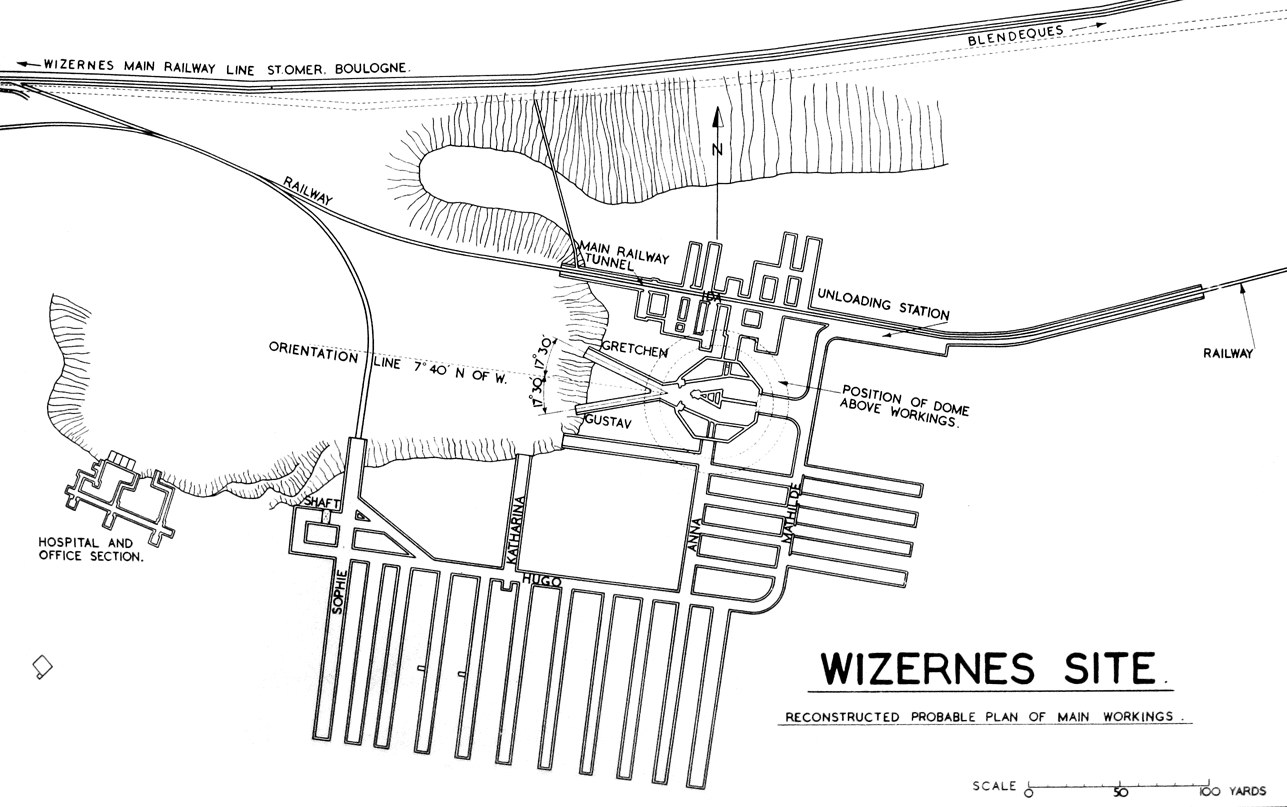La Couple, codenamed “Bauvohaben 21” was a giant Nazi complex built in the Pas-de-Calais region of northern France.
The bunker was an ambitious project to construct a permanent V-2 launch installation in the side of a disused chalk quarry, capped by an immense concrete dome.
The V-2 (German: Vergeltungswaffe 2, “Retribution Weapon 2”) was the world’s first long-range guided ballistic missile, designed to attack Allied cities in retaliation for the Allied bombings against German cities.
The Nazi leadership hoped that a barrage of rockets unleashed against London and southern England would force Britain out of the war. The missile’s operational range of 320 kilometres (200 mi) meant that a launch site had to be close to the English Channel, so a quarry south-west of Saint-Omer was chosen.

Construction of Bauvohaben 21 was commissioned between 1943 and 1944, comprising of a large concrete dome, 5 m (16 ft) thick, 71 metres (233 ft) in diameter and weighing 55,000 tons.
The dome’s designer, Todt Organisation engineer Werner Flos had the dome built on flat ground in situ, and the soil underneath was excavated so that the construction works below would be protected against aerial attacks. The dome was surrounded by a bomb-proof “skirt” or Zerschellerplatte of steel-reinforced concrete, 14 metres (46 ft) wide and 2 metres (6.6 ft) thick.
Beneath it, about 7 kilometres (4.3 mi) of tunnels planned to be dug into the chalk hillside to accommodate workshops, storerooms, fuel supplies, a LOX manufacturing plant, generators, barracks and a hospital. The facility could store a stockpile of warheads, fuel and a complex system of conveyors to launch V-2’s on an industrial scale.

A standard-gauge railway tunnel was to be built to run trains into the heart of the facility, where V2’s and rocket supplies could be offloaded to supply the launch galleries.
The central feature of the complex was a huge octagonal rocket-preparation chamber, 41 metres in diameter and 33 metres high, directly under the concrete dome. To the side of the chamber, two tunnels opened onto the launchpads named “Gustav” and “Gretchen”.

The allies first became aware of the activity on the site in August of 1943, when the RAF reconnaissance flights noted extensive new rail sidings. The dome was spotted by the Allied Central Interpretation Unit in November of 1943, however, it wasn’t until March the following year that the allies would begin attacks on the facility as part of Operation Crossbow (Operation Crossbow was the code name of the World War II campaign of Anglo-American operations against all phases of the German long-range weapons programmes including the V-2’s).
Over the next few months, the allies carried out 16 air raids targeting Bauvohaben 21, unleashing some 4260 tons of bombs (for which just a single bomb struck the dome, causing minimal damage).
In June 1994, the RAF changed strategy and began to attack the facility with the recently developed Tallboy bombs. The “Tallboy” was a ground-penetrating earthquake bomb, designed by engineer Barnes Wallis who is mostly remembered for his bouncing bomb used by the Dambusters.
The Tallboy’s completely wrecked the external constructions at Bauvohaben 21 and one Tallboy landed just beside the dome, blowing out the entire quarry cliff face and burying the entrances to Gustav and Gretchen.
The dome survived the bombardments, but the buttresses that supported the bomb-proof skirt became dislodged and tunnels beneath the dome were unpassable. Workers at the time reported that “although the dome had not been hit by the Tallboys, “the whole area around has been so churned up that it is unapproachable, and the bunker is jeopardised from underneath.”
On July 1944, Hitler abandoned his dream to launch V-2s across the channel in mass from Bauvohaben 21 and all construction was stopped. The site was finally abandoned a few days before the Allies reached it at the start of September during the rapid liberation of the area by British, American, Canadian and Polish troops.
In 1986, the Espace Naturel Régional proposed to develop the site into a tourist attraction for the Nord-Pas-de-Calais region with the intention of establishing a World War II museum there which eventually opened in May 1997.
Header Image Credit : CRM/Shutterstock







